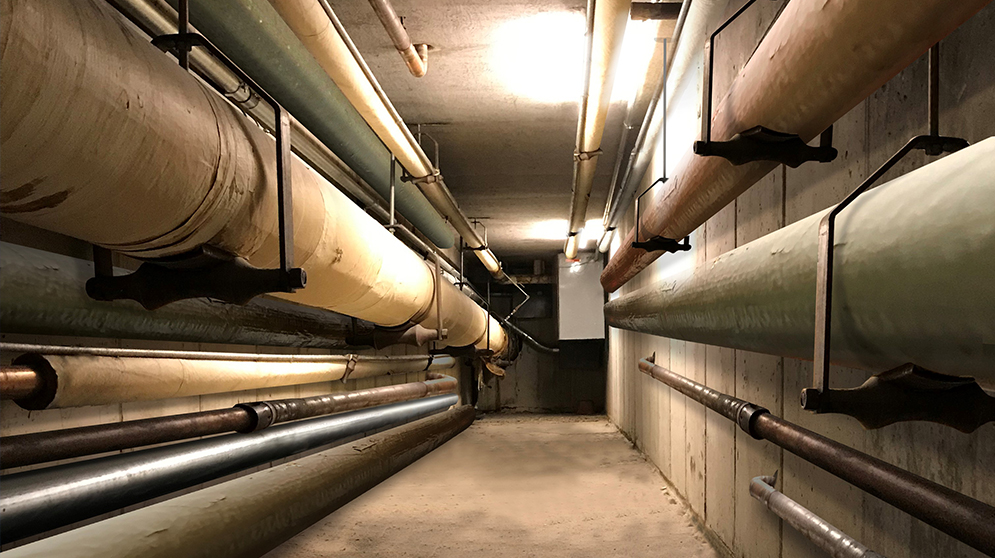This paper aims to confirm whether there is an optimal insulation thickness appropriate to the minimum total cost, and to see what the values and facts affecting the value of the minimum cost are. An optimization model is performed depending on Life Cycle Cost analysis. For this purpose, a computer program has been prepared based on the flow chart of the operation procedure overviewed in this paper. The results of Calculations carried out by the computer have given a new concept that is termed as " the critical thermal conductivity of insulation material " , the exceeding of which makes the insulation of pipe a factor that contributes to increase of total cost (ΣC) but not the opposite. The study carried out on steam pipe with outside diameter of 0.1m, steam temperature of 120 °C, steam price of 0.005 $/kg and insulation material price of 175 $/m 3 shows that the critical thermal conductivity of insulation material is 0.21 w/(m. °C), the exceeding of which will not cause decrease in the expected total cost of steam pipe insulation and the optimal insulation thickness can not be achieved. When the thermal conductivity of the insulation material used is less than that of the critical thermal conductivity by 0.10 w/(m.°C), the total cost drops from 9.69 $/(m.year) without insulation to minimum total cost of 5.184 $/(m.year) with the thermal insulation thickness of 0.092m. The outside temperature of insulation material drops from 117 to 34.4 °C. The effect of the price of steam generation, the price of insulation material, pipe diameter and temperature of steam on the optimal insulation thickness and critical thermal conductivity of insulation material are overviewed in this paper.
| Products | |
| Membrane Roofing Systems TPO PVC EPDM SBS APP BUR Liquid Applied | Roofing Components Insulation and Cover Boards Adhesives, Cements and Primers Specialty Roofing Products Fasteners and Plates Coatings |
For Professionals
Building Owners
Building Owner Resources
Preferred Accounts
Sustainability Solutions
Guarantees and Roof Maintenance
Find a Contractor
Contractors
Contractor Resources
JM Peak Advantage Contractor Program
Technical, Guarantee & Warranty Services
Peak Advantage Contractor Portal Login
Find a Distributor
Design Professionals
Design Professional Services
Specification and Design Assistance Request
BURSI Continuing Education Program
Nonwovens
Fiberglass Mat for:
Bituminous Roofing
Roof Decks
Roofing Shingles
Carpet Tiles
Ceiling Tiles
LVT Flooring
Resilient Flooring
Polyester Nonwoven for:
Bituminous Roofing
Carpet Tiles
Filtration Products
Air Filtration
HVAC
HEPA/ULPA
Air Pollution Control
Industrial Filtration
Liquid Filtration
Coolant Oil
Industrial Filtration
Reinforcement Fiberglass
Chopped Fiberglass for:
Polyamides (PA)
Polyolefins (PP, PE)
Gypsum Boards
Single-End Roving for:
Long Fiber Thermoplastics (LFT, D-LFT)
Structural Thermoplastics
Thermoset Composites
Multi-End Roving for:
Sheet Moulding Compound
Thermoset Composites

